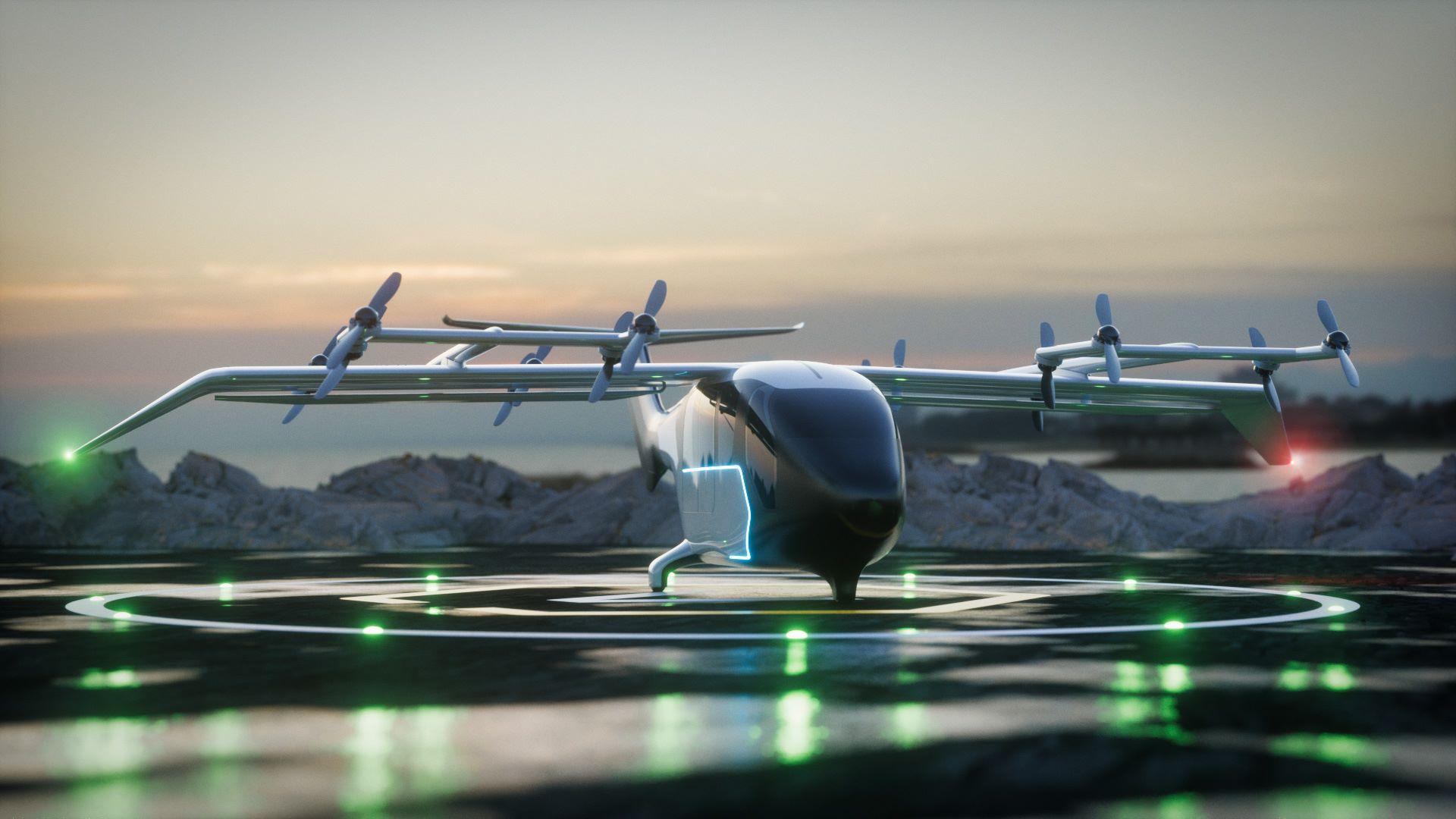
The Integrity is designed to carry a pilot and five passengers up to 100 km (62 mi.).
As they race to develop their aircraft and revolutionize mobility, leading air taxi startups are pursuing a series of novel design configurations, each with their own set of advantages and drawbacks.
Against that competitive backdrop, Spanish startup Crisalion believes it has created a unique design that can capitalize on the strengths of other popular propulsion concepts in the electric vertical-take-off-and-landing (eVTOL) space, while mitigating their drawbacks.
Formerly known as UMILES Next, Madrid-based Crisalion is developing the Integrity eVTOL air taxi using a propulsion system created by Spain’s Tecnalia research and technology center. Dubbed “FlyFree,” the novel concept centers on a propulsion unit that resembles a quadrotor drone.
The Integrity has four of these units, each of which can be controlled individually, as in a drone, by varying the rpm of each of its four rotors. Individual control of the multirotor propulsion units improves stability and safety, allowing the vehicle to counter winds and gusts and execute complex maneuvers.
“For most people, it clicks to imagine that we are suspending the aircraft from four drones, which are connected to the aircraft by passive joints,” Crisalion Managing Director Manuel Heredia tells the AAM Report. “It’s really that simple; you hang the aircraft from four drones, which are controlled individually through differential thrust–spinning the rotors at different speeds to change direction of the aircraft—and that provides really great stability, especially during transition.”
Heredia highlights several key advantages of the FlyFree concept. One benefit is that it allows for the decoupling of the direction of the propulsion from the attitude of the aircraft. Another is that the propulsion units–or the “drones,” as Heredia describes them–have very low inertia, so they can react quickly to absorb any turbulence while maintaining stability in the cabin.
But the most important advantage, according to Heredia, is that the FlyFree system enables a highly-efficient transition between vertical flight and cruise, achieved simply via differential propulsion, providing for excellent control and stability while preventing various modes of stall.
The company believes the FlyFree concept is superior to competing designs in terms of safety and efficiency. Multicopters, for example, are limited in range with current batteries because they lack a wing to generate lift. Lift-plus-cruise designs, on the other hand, have lower efficiency during cruise due to the drag created by the feathered lift propellers. And tiltrotors have proven notoriously difficult to develop and certify, as evidenced by the long saga of the V-22 Osprey.
“The advantage of FlyFree is that transition is achieved in a very natural way with very fine control,” Heredia says. “At the same time, you’re able to prevent many modes of stall just by actuating these units … So, it has a certain number of unique advantages that I believe will make it a really great configuration for an eVTOL.”
The company has been engaged in indoor flight testing with an unmanned technology demonstrator called Concept since 2019, and outdoor testing since 2022. The aircraft has been taken through a significant part of the flight envelope, including transition, validating the benefits of the FlyFree concept and generating data that fed into the redesigned Integrity, which was announced at the Dubai Air Show alongside the rebrand from UMILES Next to Crisalion.
The major impetus behind the redesigned aircraft was a realization that autonomous passenger-carrying services may be as many as 15-20 years away, according to Heredia, spurring a need to enlarge the aircraft to accommodate a pilot, as well as additional payload and range to improve the operating economics. As such, the Integrity can now carry a pilot and five passengers up to 130 km (80 mi.).
Unlike its multicopter predecessor, the redesigned Integrity also features a fixed wing and T-tail, providing improved lift and performance during cruise. “The design looks much more conventional now,” Heredia says. “The body is a hybrid between what you would expect from a helicopter and a plane, and the real breakthrough element of this design remains the propulsion system.”
Crisalion has begun building mockups of the Integrity for wind tunnel testing, which is expected to commence in the first quarter of 2024. Afterward, the roadmap calls for manufacture of a subscale prototype of the redesigned aircraft to test modifications made to its autopilot software, which is scheduled for next summer. By 2025, the company hopes to have an unmanned full scale technology demonstrator cabin mockup to showcase at the Paris Air Show.
As with the redesign of the Integrity, the decision to rebrand from UMILES Next to Crisalion was also motivated by the shift away from unmanned operations, says Heredia, noting that the “UMILES” moniker was a play on “unmanned miles.”
The new name was inspired by a combination of the words “crysalis,” which symbolizes change or transformation, with “lion,” a symbol of courage, according to Heredia. “It takes a lot of courage and leadership to embark on this transformation, so we felt the name fit nicely,” he says.
Crisalion recently raised more than €15 million ($15.9 million) through a Series A funding round, led by Spanish holding company Grupo Ibérica and family-run investment company Grupo Valdemira, both longtime backers of the startup.
Entry-into-service for the Integrity is currently targeted for 2030.
